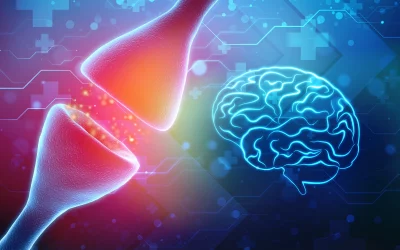WHAT EXACTLY IS A TRAUMATIC BRAIN INJURY (TBI)?
Traumatic brain injury (TBI) occurs when a sudden, external physical attack damages the brain. It is one of the leading causes of adult disability and mortality. TBI is a broad term that encompasses a wide range of damage to the brain. The damage might be localized (limited to a single part of the brain) or diffuse (affecting the whole brain) (happens in more than one area of the brain). A brain injury may vary in severity from a minor concussion to severe damage that ends in coma or death.
Free Consultation
In Person | Phone | Zoom
WHAT ARE THE VARIOUS FORMS OF TBI?
One of two things may cause a brain injury:
A closed head injury. When there is a nonpenetrating lesion to the brain but no break in the skull, it is called a closed brain injury. A closed brain injury is produced by bruising and ripping of brain tissue and blood vessels due to a fast forward or backward movement and shaking of the brain within the bone skull. Car accidents fall, and, increasingly, sports are the most common causes of closed brain injuries. This sort of damage may also be caused by shaking a newborn (called shaken baby syndrome).
A brain damage that penetrates the skull. When a crack in the skull occurs, such as when a gunshot pierces the brain, penetrating or open head injuries occur.
Diffuse axonal injury (DAI) is a term used to describe damage to the brain’s axons.
DAI frequently results in a coma and damage to various areas of the brain. Diffuse axonal damage occurs when the brain is wounded as it moves and rotates within the bony skull, causing the shearing (tearing) of the brain’s long connecting nerve fibers (axons). The alterations in the brain are generally tiny, and CT and MRI scans may not reveal them.
WHAT IS THE DIFFERENCE BETWEEN PRIMARY AND SECONDARY BRAIN INJURY?
The term “primary brain injury” refers to sudden and severe brain damage that is more or less complete at the moment of impact. This occurs after a car accident, a gunshot wound, or a tumble.
The alterations that occur hours to days following an initial brain injury are secondary brain damage. It refers to a sequence of biological, chemical, tissue, or blood vascular changes in the brain that lead to more brain tissue loss.
WHAT CAUSES A CONCUSSION?
Head injuries may occur for a variety of reasons in both children and adults. The most frequent injuries are those caused by motor car accidents (whether the individual is a passenger or a pedestrian), violence, falls or shaking a kid (as seen in child abuse cases).
WHAT CAUSES BRAIN BRUISING AND INTERNAL DAMAGE?
When a direct hit to the head occurs, a process known as coup-contrecoup causes bruising of the brain and damage to internal tissue and blood vessels. A coup lesion is a bruise caused by trauma at the point of impact (pronounced COO). When the brain jolts backward, it may collide with the opposite side of the skull, resulting in a bruise known as a contrecoup lesion. Shearing (tearing) of the internal lining, tissues, and blood vessels may result in internal bleeding, bruising, or swelling of the brain when the brain is jarred against the sides of the skull.
SUICIDE RISK INCREASE
Traumatic brain injury (TBI) is a serious condition. Recent research suggests, however, that brain damage may render individuals dangerous to themselves. Multiple brain injuries, even moderate ones, may lead to higher suicide ideation, according to research released by the University of Utah National Center for Veterans’ Studies. This is particularly true among military members, whose suicide rates are already far higher than civilians. On the other hand, military soldiers have a far greater risk of sustaining a single or many brain injuries.
In the military, suicide is the second greatest cause of death. Suicide took the lives of almost 100,000 servicemen and women in 2008. As depressing as these figures are, they are unfortunately on the increase. According to the report, the numbers in 2008 are up by 50% from 2001.
Researchers from Canada and the United States conducted a meta-analysis evaluation of papers on concussions and brain damage. The analysis includes 17 research, all of which were published after 1963. The study looked at data from over 700,000 people who had been diagnosed with a TBI. The control group included 6.2 million people who had not been diagnosed with a brain injury.
According to the study, patients with a history of TBI had a two-fold greater risk of participating in suicidal conduct, attempting suicide, or having suicidal thoughts. Multiple concussions in the same patient might raise the risk even further. However, the conclusions of the researchers on this subject were inconclusive.
This meta-analysis review is one of the most current research to look at the connection between concussions and suicide. Patients with a history of brain injury had double the risk of suicide, according to research published in the Journal of the American Medical Association (JAMA) in August 2018.
The data of almost 34,000 people were analyzed in the study, which was done by Danish academics. The data found that the absolute suicide rate among those without a history of TBIs was 20 per 100,000 person-years. The absolute suicide rate among persons with a history of brain injury was 41 per 100,000 person-years.
CONCUSSIONS AND BRAIN DAMAGE HAVE OTHER DANGEROUS CONSEQUENCES.
As problematic as it is, this study is merely the tip of the iceberg when it comes to the dangers of concussions and traumatic brain injuries. Convulsions or seizures, coma, and chronic headaches are possible outcomes of a moderate to severe TBI. Some survivors exhibit odd behavior and personality changes, such as becoming hostile or belligerent. Long-term cognitive issues, intellectual disabilities, and communication impairments are also conceivable.
Some brain injuries are minor, and with appropriate care, symptoms go away over time. Others are more serious and may lead to long-term impairment. Brain damage may have long-term or permanent consequences that may need post-injury and potentially lifetime therapy.
Cognitive deficits coma
confusion
shortened attention span
memory problems and amnesia o Problem-solving deficits Problems with judgment
Inability to understand abstract concepts o Loss of sense of time and space Decreased awareness of self and others
Inability to accept more than one- or two-step commands at the same time
Inability to accept more than one- or two-step commands at the same time o Inability to accept Perceptual or sensory deficits
Changes in hearing, vision, taste, smell, and touch
Loss of sensation or heightened sensation of body parts o Left- or right-sided neglect Difficulty understanding where limbs are about the body
Vision problems, including double vision, lack of visual acuity, or limited range of vision o Vision problems, including double vision, lack of visual acuity, or limited range of vision o Communication and language deficit (apraxia)
Sluggish, hesitant speech and a limited vocabulary o Difficulty making coherent phrases Difficulty recognizing things and their functions
Problems with reading, writing, and working with numbers Social difficulties
Impaired social capacity resulting in difficult interpersonal relationships o Difficulties in making and keeping friends
Difficulties understanding and responding to the nuances of social interaction Regulatory difficulties
Impaired ability with activities of daily living (ADLs), such as dressing, bathing, and eating o Problems with organization, shopping, or paying bills
Inability to drive a car or operate machinery o Apathy Decreased motivation o Emotional lability
Irritability
Anxiety and depression
Disinhibition, including temper outbursts, aggression, cursing, lowered frustration tolerance, and inappropriate sexual behavior
Disinhibition, including temper outbursts, aggression, cursing, lowered frustration tolerance, and inappropriate sexual behavior
When the chemical makeup of the brain is altered, some mental diseases are more prone to develop.
Traumatic Epilepsy o Epilepsy may occur after a brain injury, although it occurs more often after
severe or penetrating traumas. While most seizures occur shortly after an injury or during the first year, Epilepsy may develop years later. Major or generalized seizures, as well as mild or partial seizures, are all part of Epilepsy.
IS IT POSSIBLE FOR THE BRAIN TO REPAIR AFTER AN INJURY?
The majority of research implies that brain cells do not recover after they have been killed or injured. However, recovery after a brain injury is possible, particularly in younger individuals, since other parts of the brain may compensate for the damaged tissue in certain situations.
In certain circumstances, the brain learns to reroute information and operate around the parts that have been injured. The level of healing is unpredictable at the moment of injury, and it may take months or even years to find out. Each brain injury is different, as is the pace of recovery. Serious brain damage frequently requires a lengthy or lifetime treatment and rehabilitation procedure.
WHAT EXACTLY IS A COMA?
Coma is an altered state of consciousness that may be extremely profound (unconsciousness), in which the patient does not react to any stimulus. It may also be a diminished level of awareness that allows the patient to move about and react to discomfort. Comatose individuals aren’t the only ones who have suffered brain damage.
Depending on the location and severity of the brain damage, the depth of coma and the amount of time a patient remains in a coma vary substantially. Some people make a full recovery after waking up from a coma. Other patients are severely handicapped.
WHAT CRITERIA ARE USED TO DETERMINE WHETHER A PERSON IS IN A COMA?
The Glasgow coma scale is used to determine the depth of a coma in emergency and critical care settings. Eye-opening, verbal response, and motor reaction are all evaluated on the scale (which ranges from 3 to 15). A high score indicates heightened alertness and awareness.
Several scales and metrics are used in rehabilitation settings to grade and record the patient’s progress. The following are some of the most prevalent of these scales.
LOS AMIGOS RANCH
The Cognitive Functioning Scale has ten levels. The original Rancho 8 Level Scale, based on how the patient responds to external stimuli and the surroundings, has been revised. The scales are divided into ten levels, with each patient progressing through them in stages with starts and pauses, progress, and plateaus.
SCALE OF DISABILITY RATINGS (DRS)
This scale rates a person’s degree of handicap from none to high and assesses functional change over time. The DRS may trace a person’s development from “coma to community” by assessing cognitive and physical function, impairment, disability, and handicap.
INDEPENDENT FUNCTIONAL MEASUREMENT (FIM)
The FIM scale assesses a
person’s degree of independence in everyday activities. Scores may vary from 1 (total reliance) to 7 (full independence) (complete independence).
Measurement of Functional Assessment (FAM). This measure, which is used in conjunction with FIM,
was created exclusively for those with brain damage.
The Brain Injury Rehabilitation Program is a program that helps people who have suffered a During the acute treatment phase, the patient with brain damage starts rehabilitation. A more intensive rehabilitation program is frequently started when the patient’s health improves.
Many factors influence rehabilitation success, including the following:
The kind and severity of the brain damage
The type and severity of any subsequent impairments and disabilities The patient’s overall health
Family support
It’s critical to concentrate on improving the patient’s skills at home and in the community. Positive reinforcement promotes independence and improves self-esteem, which aids healing.
The purpose of brain injury rehabilitation is to assist the patient in regaining maximum function and independence while also increasing their entire quality of life—physically, emotionally, and socially.
The following topics may be addressed in brain damage rehabilitation programs:
Self-care skills: feeding, grooming, bathing, dressing, toileting, and sexual functioning Physical care: nutritional needs, medicines, and skincare
Mobility skills: walking, transfers, and self-propelling a wheelchair Communication skills: speech, writing, and alternative methods of communication Cognitive skills: speech, writing, and alternative methods of communication
Education: patient and family education and training on brain damage, safety risks, home care requirements, and adaptive approaches
Family support: aid with adjusting to lifestyle changes, financial concerns, and discharge planning The Rehabilitation Team for Brain Injuries
The patient and family are at the center of the brain injury rehabilitation team, which helps create short- and long-term therapy objectives for recovery. The brain injury rehabilitation team includes a variety of competent experts, including any or all of the following:
Neurologist/neurosurgeon Physiatrist
Internists and specialists Rehabilitation nurse Social worker
Physical therapist
Occupational therapist Speech/language pathologist
Psychologist/neuropsychologist/psychiatrist Recreation therapist
Audiologist Dietitian
Vocational counselor Orthotist
Case manager
The patient may have facial muscle paralysis, loss of vision or double vision, and dizziness if the brain injury has caused cranial nerve damage. Other TBI effects include hearing loss, loss or altered sensation of taste, and swallowing issues.
In addition, military activities in Afghanistan started in 2001, after the 9/11 attacks, while military operations in Iraq began in 2003. These two massive military missions had a significant impact on those figures. Traumatic brain injuries (TBI) are one of the most common injuries among veterans of those wars. According to the research, soldiers who suffer from TBI are more prone to commit suicide.
According to the study’s authors, the rise in suicide is connected to a rise in mental disorders among military members over the same period.
More than 150 military troops and a handful of commercial contractors operating in Iraqi war zones were examined for the research. Each test participant was recuperating from a brain injury in a military hospital. Suicidal thoughts were reported by 7% (7%) of those assessed who had had a first-time brain injury. However, twenty-two percent (22%) of persons with multiple brain injuries who were assessed said they had suicidal thoughts.
Soldiers aren’t the only ones who suffer from traumatic brain injuries. Even though this research only looked at data from military members, the findings have far-reaching implications. Unfortunately, brain injuries are common. Every year, two million people suffer from a traumatic brain injury.
TBI also accounts for more than a third of all injury-related fatalities in the US. Car accidents are also responsible for around a third of TBI sustained by non-military persons. A TBI’s expenses and treatment may be exorbitant; this, along with the fact that it has been known to increase suicidal ideation, makes it exceedingly risky.
Brain injuries must be treated with extreme caution. Many brain injuries go untreated because they are not reported. This is a tremendous blunder. You should consult a doctor if you feel you or a loved one has experienced a TBI.
Additionally, if you or a loved one has suffered a TBI due to an car accident, you should contact a brain injury lawyer right once. Our skilled car accident lawyers are standing by to take your call. Free and private first consultations are available. We recognize that this is a delicate situation, and we want to assist you in recovering from your injuries.












